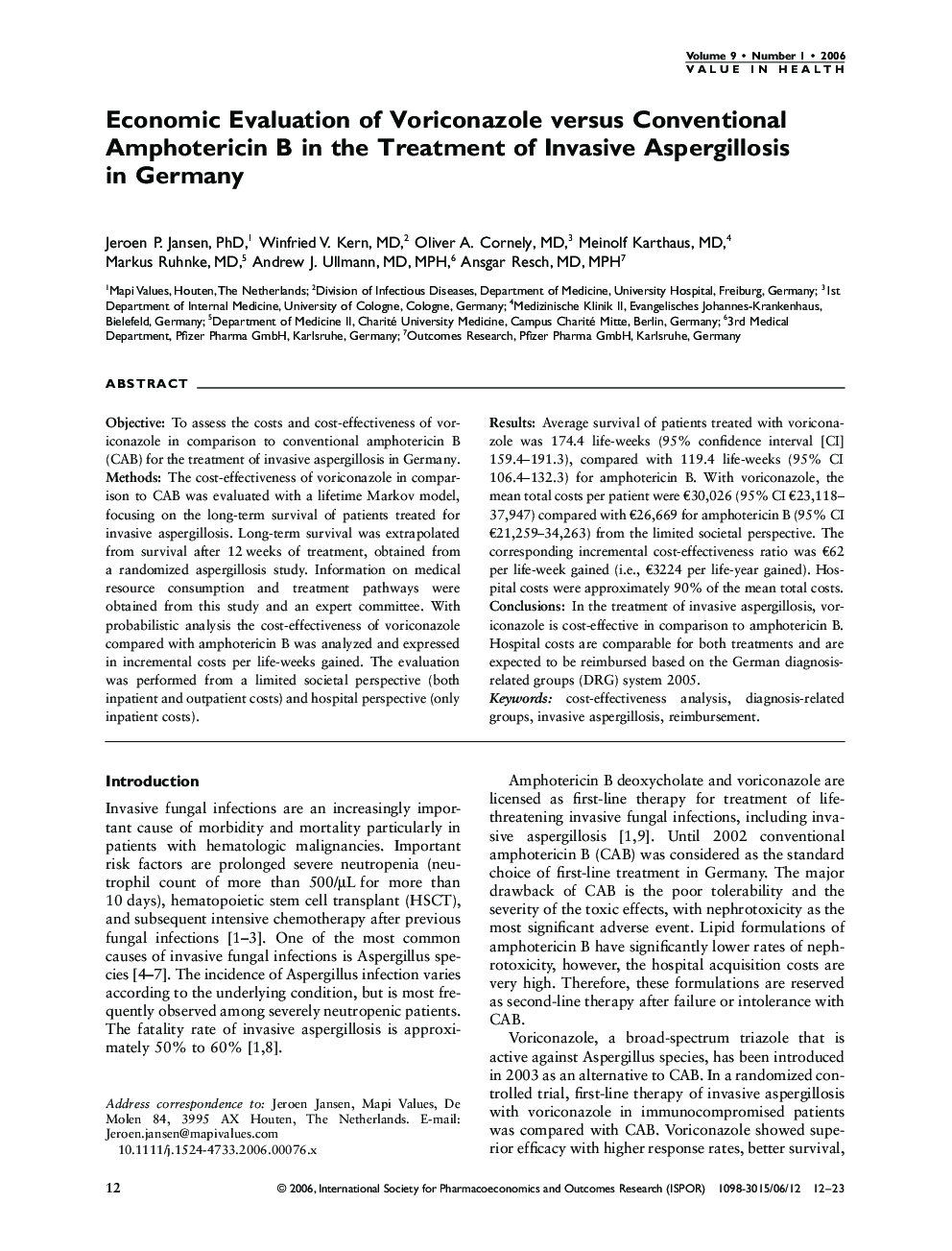| Article ID | Journal | Published Year | Pages | File Type |
|---|---|---|---|---|
| 988150 | Value in Health | 2006 | 12 Pages |
ObjectiveTo assess the costs and cost-effectiveness of voriconazole in comparison to conventional amphotericin B (CAB) for the treatment of invasive aspergillosis in Germany.MethodsThe cost-effectiveness of voriconazole in comparison to CAB was evaluated with a lifetime Markov model, focusing on the long-term survival of patients treated for invasive aspergillosis. Long-term survival was extrapolated from survival after 12 weeks of treatment, obtained from a randomized aspergillosis study. Information on medical resource consumption and treatment pathways were obtained from this study and an expert committee. With probabilistic analysis the cost-effectiveness of voriconazole compared with amphotericin B was analyzed and expressed in incremental costs per life-weeks gained. The evaluation was performed from a limited societal perspective (both inpatient and outpatient costs) and hospital perspective (only inpatient costs).ResultsAverage survival of patients treated with voriconazole was 174.4 life-weeks (95% confidence interval [CI] 159.4–191.3), compared with 119.4 life-weeks (95% CI 106.4–132.3) for amphotericin B. With voriconazole, the mean total costs per patient were €30,026 (95% CI €23,118–37,947) compared with €26,669 for amphotericin B (95% CI €21,259–34,263) from the limited societal perspective. The corresponding incremental cost-effectiveness ratio was €62 per life-week gained (i.e., €3224 per life-year gained). Hospital costs were approximately 90% of the mean total costs.ConclusionsIn the treatment of invasive aspergillosis, voriconazole is cost-effective in comparison to amphotericin B. Hospital costs are comparable for both treatments and are expected to be reimbursed based on the German diagnosis-related groups (DRG) system 2005.
